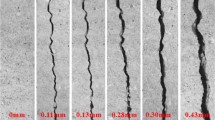Abstract
In this study, sound source localization and identification of a refrigerator were accomplished by using the half-space boundary element method (BEM) based on surface velocity measurements. Surface velocities of the refrigerator were measured by a vibration test set-up; and two main dominant excitation frequencies were determined. The velocity data were fed to half-contact BE model of the refrigerator built in our “in-house” BEM computer code. The code calculated surface acoustic pressure distributions. The surface pressures exposed the location of sound sources of the refrigerator. Near-field sound radiation pattern of the localized sources were obtained by the surface pressure-input to the computer code.






Similar content being viewed by others
References
Castellini, P., Martarelli, M.: Acoustic beamforming: analysis of uncertainty and metrological performance. Mech. Syst. Signal Process. 22, 672–692 (2008)
De Bree, H.E., Basten, T.G.H., Tijs, E.H.G., Voogdt, J.: Fast in-flight cabin interior sound source localization. 33rd ERF Centenary of the first helicopter flight, Kazan, Russia (2007)
De Bree, H.E., Basten, T.G.H.: Microflown based monopole sound sources for reciprocal measurements. SAE, Brazil (2008)
De Vries, J.H., de Bree, H.E.: Scan and listen: a simple and fast method to find sources. SAE, Brazil (2008)
De Bree, H.E., Bekke, D.A., de Vries, J.H.: A source path contribution analysis on tire noise using particle velocity sensors. NAG-DAGA international conference on acoustics, Rotterdam (2009)
Dokumacı, E., Sarıgül, A.S.: Analysis of the near field acoustic radiation characteristics of two radially vibrating spheres by the Helmholtz integral equation formulation and a critical study of the efficacy of the “CHIEF” overdetermination method in two-body problems. J. Sound Vib. 187(5), 781–798 (1995)
Fahy, F.J.: Some applications of the reciprocity principle in experimental vibroacoustics. Acoust. Phys. 48(2), 217–229 (2003)
Holste, F., Neise, W.: Noise source identification in a propfan model by means of acoustical near field measurements. J. Sound Vib. 203(4), 641–665 (1997)
Janssens, M.H.A., Verheij, J.W.: A pseudo-forces methodology to be used in characterization of structure-borne sound sources. Appl. Acoust. 61, 285–308 (2000)
Janssens, M.H.A., Verheij, J.W., Loyau, T.: Experimental example of the pseudo-forces method used in characterization of a structure-borne sound source. Appl. Acoust. 63, 9–34 (2002)
Maynard, J.D., Williams, E.G., Lee, Y.: Near-field acoustic holography: I. Theory of generalized holography and the development of NAH. J. Acoust. Soc. Am. 78(4), 1395–1413 (1985)
Sarıgül, A.S., Seçgin, A.: A study on the applications of the acoustic design sensitivity analysis of vibrating bodies. Appl. Acoust. 65(1), 1037–1056 (2004)
Schuhmacher, A., Hald, J., Rasmussen, K.B., Hansen, P.C.: Sound source reconstruction using inverse boundary element method. J. Acoust. Soc. Am. 113(1), 114–127 (2003)
Seybert, A.F., Wu, T.W.: Modified Helmholtz integral equation for bodies sitting on an infinite plane. J. Acoust. Soc. Am. 85(1), 19–23 (1989)
Verheij, J.W.: Inverse and reciprocity methods for machinary noise source characterization and sound path quantification. Part 1: sources. Int. J. Acoust. Vib. 2, 11–20 (1997a)
Verheij, J.W.: Inverse and reciprocity methods for machinary noise source characterization and sound path quantification. Part 2: transmission paths. Int. J. Acoust. Vib. 3, 11–20 (1997b)
Williams, E.G.: Fourier acoustics: sound radiation and nearfield acoustical holography. ISBN: 0127539603, June 1999
Author information
Authors and Affiliations
Corresponding author
Rights and permissions
About this article
Cite this article
Seçgin, A., Sarıgül, A.S. An efficient sound source determination process based on half-space boundary element method. Int J Mech Mater Des 6, 17–25 (2010). https://doi.org/10.1007/s10999-010-9113-7
Received:
Accepted:
Published:
Issue Date:
DOI: https://doi.org/10.1007/s10999-010-9113-7




